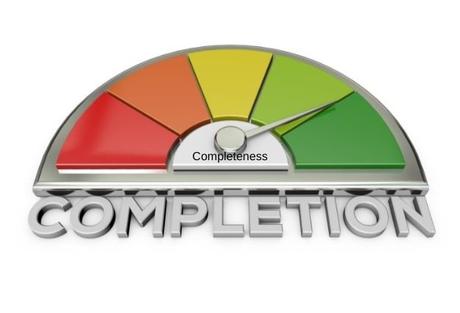They aid in creating excellent and efficient communication-necessary for an ideal and efficient business environment.

In this post, I'll walk you through the 4S's of communication, as well as the 7C's of business communication. So let's get right in:
The 4's of communication are Shortness, Strength, Simplicity, and Sincerity.
It is believed that "brevity is the spirit of wit." The same applies to communication.
If communication can be concise and verbosity eliminated, message transmission and understanding will be quick and efficient.
Messages that are flooded with high-sounding words have no critical influence. Many folks seem to believe that if they continue their speedy efforts, they will impress the recipient.
Unfortunately, they do not know how much time they waste since the recipient spends a significant amount of time attempting to comprehend the real essence of the communication.
The use of simple words and concepts indicates clarity of thinking. When a person is perplexed, he is more likely to utilize similar tactics to guide the recipient through a maze. Therefore, it's necessary to use basic vocabulary and concepts that demonstrate clarity.

The trustworthiness of the messenger determines the power of the message.
When the sender trusts in the information they want to give, anything he attempts to say will be more substantial and convincing. They do not believe in providing a hint of falsity to the whole message.
A genuine approach to a problem is evident to the recipient. Whenever the sender is sincere, it will be apparent in the way they communicate.
Assume there is a slight amount of deception in the conversation or on the sender's behalf.
If the recipient is alert and attentive, he will detect the fictitious circumstance, and commercial transactions will not occur, even if they are in full flow.
7 C's of Business Communication
The seven C's of communication are a set of rules that you must follow in all conversations. They help the individual with whom you're interacting understand what you're saying.
The seven C's include being clear, concrete, complete, correct, concise, considerate, and courteous with communication.

Clarity is achieved in phases.
It's critical to understand why you're conveying the message. You should inform the recipient why they are getting the communication and what you hope to accomplish by sending it.
If there are many objectives, each one should be stated independently.
Second, the subject of communication must be understandable. Avoid complexity, utilize primary language, simple structures, and keep your message's main themes in mind.
Instead of making lengthy statements like, "We have evaluated the implications of the current policy on the hiring techniques we use with our human resources department and have modified them appropriately," state, "We have revised our hiring strategies."
You must utilize helpful facts as well as precise language and syntax. If your listeners notice mistakes in either, they'll be sidetracked, and your trustworthiness will deteriorate. As a result, your message will be less effective.
"You can access the facility during normal working hours; however, you'll have to present a valid identification card."
You can make the statement better by saying, "You may access the facility daily between 9 and 5, but must present your employment identification card."
Completeness is frequently seen as one of the most crucial of the seven Cs of communication.
When sending a message, it's critical to provide the receiver with all of the details; they should understand your point and establish a similar conclusion as you.
This degree of information may vary depending on the scenario, and you should tailor your responses accordingly.

Furthermore, you need to make the message as simple as possible. For instance, when giving a "call to action," include precise instructions on carrying out that action.
It is becoming more customary to incorporate hyperlinks in written messages or to add FAQs. They both allow the recipients to obtain a comprehensive information collection and enable the communications center to focus on primary topics.
"You haven't accomplished the assignment that I assigned to you" is an ambiguous statement. Instead, be sure to provide all pertinent information:
"The information on customer X that I requested you to establish on May 7 should have been finished by yesterday. At what time will you submit it?"
When designing your conversation, you have to be explicit and guarantee that the reasoning and ideas you use match collectively, rely on each other, and reinforce the other.
Your thoughts should be wired on facts and views from reliable sources. In other words, you should provide indisputable evidence to back up your claims.
It could be necessary to include instances that demonstrate the relevance of your words to your listeners-to assist in bringing the solid quality of what you've developed to reality.
A perfect illustration is a low performance when having a one-on-one conversation.
"Your sales figures are a little low. They must be brought up to nearly the average match."
With proof and an active voice, provide your staff with precise direction:
"You have below 50 percent sales conversion rate. You need to raise this to at least 65 percent to meet the team standard."
It is critical to stay on topic and keep your communications brief and straightforward when conveying messages. Never use ten words when five would be enough-and never say the same thing twice.
The more you speak, the more likely it is that you will be misunderstood. Avoid this risk by concentrating entirely on the crucial ideas you must present.
"In fact, during August, all staff must wear proper apparel to remain comfortable while the cooling system is being fixed."
"In August, all staff must wear proper apparel to remain comfortable while the cooling system is fixed."
Being courteous and demonstrating to your listeners that you appreciate them will help you improve the efficacy of your communications. Your communications should be approachable, professional, courteous, polite, transparent, and honest.

To assist in maintaining politeness, constantly employ empathy and examine your messaging from the audience's perspective.
"I don't like how your team rejects my team's pleas for collaboration. The job we perform is just as vital as yours. Would you make it a point to ensure that your staff interacts more easily henceforth?"
Such a statement would probably elicit an adverse reaction. Alternatively, a more successful strategy would be as follows:
"I recognize that your team is jam-packed and that they receive lots of requests to collaborate on research work. Similarly, my team is currently focused on an important project with considerable mutual benefits.
I would much appreciate it if our teams collaborated efficiently to move this project forward more swiftly. Kindly inform us if there's anything we can do to assist in making it work."
7. Consideration and Coherence
Consideration or coherence is the final of the seven Cs of communication. Your communication will be ineffective if it is not coherent. A logical flow and consistency in style, tone, and language ensure that your messages are thoughtful and cohesive.
You need to guarantee message consistency while sending several messages to ensure that each statement you give is consistent within itself.
Assume you are unable to pay a previously agreed-upon bonus. What is the correct way to pass this information?
"We are not able to give bonuses at this time. A significant client has yet to pay the company. We can contemplate paying contractual incentives immediately after the money is received."
The statement may be better expressed as follows:
"Unfortunately, we are not currently in a position to provide your bonus. But, after our big client has cleared their bill, we shall pay any incentives owing to you.
We apologize for the delay, but we are certain that you appreciate our need for strong cash flow and the long-term advantages it will provide to you."
Frequently Asked Questions
1. What Are The Three Most Important Keys To Effective Business Communication?
The three keys of communication are ListeningNonverbal and Written Communication. Any good professional relationship is built on communication. You need clarity, conciseness, and coherence to achieve optimal communication.
2. What Are Business Communication Strategies?
A company communication plan considers these options and provides a unified perspective of what, when, how, and why individuals communicate.
You should define: Messaging: the message you want to pass, and who in your company has the authority to say it?
Communication is a vital talent that is exercised in leadership roles. When communicating correctly, your staff will work more efficiently, and you'll acquire their respect.
Before sending any message to people or organizations, it should satisfy the 7 C's of corporate communication. If you adopt the rules, you'll notice that your communication gains more significance, becomes more compelling and influential, and creates more favorable reactions.
Furthermore, the four S's of communication also aid in the creation of excellent and efficient communication. In other words, Comprehending the 4 S's is just as vital as knowing the 7 C's.

